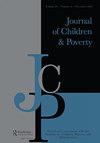Increasing parental involvement of English Language Learner families: What the research says
Q2 Social Sciences
引用次数: 22
Abstract
The nearly 10 million English Language Learners (ELLs) represent the fastest-growing segment of the US's public school student population. While research continually finds that ELL parents, generally speaking, place a high value on their children's education, many immigrant, refugee, and ELL parents experience their relationships with their children's schools very differently from mainstream English-speaking families. Schools often struggle to meet the unique instructional and linguistic needs of these students, and communities with large ELL populations face the additional challenge of communicating with parents, who may have limited fluency in English and comparatively low levels of literacy in their native languages [Arias, M. B., and M. Morillo-Campbell. 2008. Promoting ELL Parental Involvement: Challenges in Contested Times. Education Policy Research Unit. http://epsl.asu.edu/epru/documents/EPSL-0801-250-EPRU.pdf.]. Additionally, immigrant and ELL parents may have had negative experiences with educational institutions or less exposure to formal schooling. Thus, for schools to increase parental involvement most effectively, both traditional and nontraditional approaches to family engagement must be implemented within practices that are culturally and linguistically appropriate. This article provides an overview of the barriers that limit ELL parental involvement, recommends strategies that promote family engagement, and concludes with a case study of one public school district's successful outreach efforts.增加英语学习者家庭的父母参与:研究表明
近1000万英语学习者是美国公立学校学生人数中增长最快的一部分。虽然研究不断发现,一般来说,英语母语的父母非常重视孩子的教育,但许多移民、难民和英语母语的父母与主流英语家庭的关系非常不同。学校经常努力满足这些学生独特的教学和语言需求,而拥有大量ELL人口的社区面临着与父母沟通的额外挑战,他们可能英语流利程度有限,母语读写水平相对较低[Arias, M. B.和M. Morillo-Campbell]。2008. 促进ELL家长参与:竞争时代的挑战。教育政策研究小组。http://epsl.asu.edu/epru/documents/epsl - 0801 - 250 - epru.pdf。]。此外,移民和ELL父母可能在教育机构有过负面经历,或者接受正规学校教育的机会较少。因此,学校要想最有效地增加家长的参与,传统和非传统的家庭参与方法都必须在文化和语言上适当的实践中实施。本文概述了限制ELL家长参与的障碍,推荐了促进家庭参与的策略,并以一个公立学区成功推广工作的案例研究作为结论。
本文章由计算机程序翻译,如有差异,请以英文原文为准。
求助全文
约1分钟内获得全文
求助全文

 求助内容:
求助内容: 应助结果提醒方式:
应助结果提醒方式:


